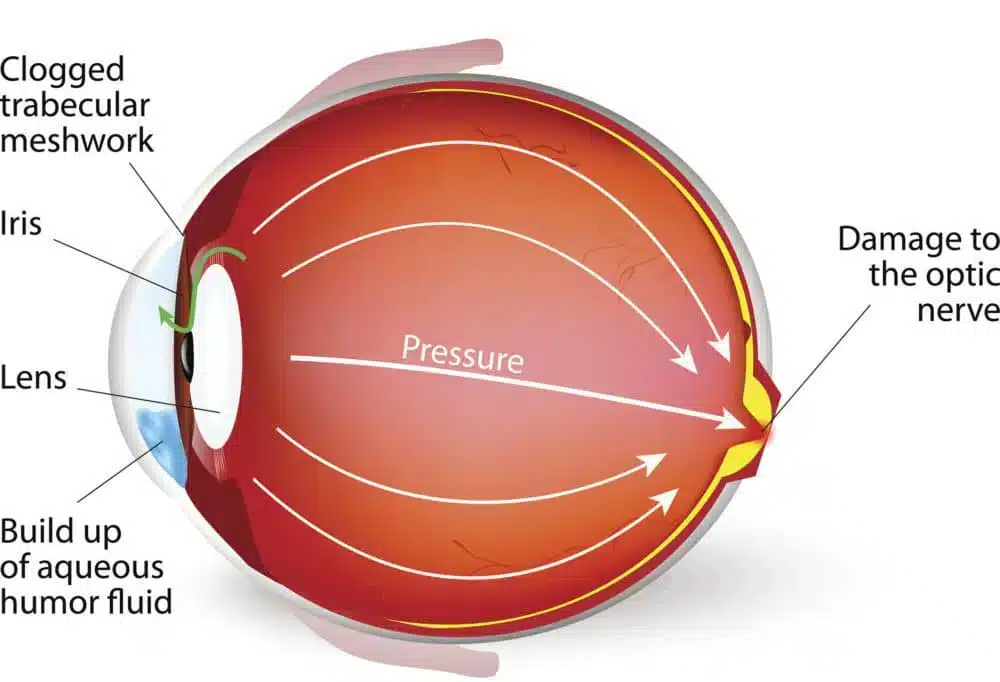Glaucoma
Glaucoma is a group of eye conditions that damage the optic nerve-the critical connection between the eye and the brain responsible for vision. This damage is most often caused by elevated intraocular pressure (IOP), though some types of glaucoma can occur even with normal or low eye pressure.
Symptoms Of Glaucoma
Glaucoma is often called the “silent thief of sight” because it typically develops without noticeable symptoms in its early stages. Many patients are unaware of the condition until significant vision loss has occurred. In certain types of glaucoma, symptoms may include:
- Sudden vision loss
- Eye pain
- Headache
- Nausea
- Halos around lights
As the disease progresses, it usually causes peripheral vision loss and may eventually affect central vision. If left untreated, glaucoma can lead to permanent blindness. Early detection and treatment are crucial, as vision loss from glaucoma is irreversible.
Risk Factors For Glaucoma
Anyone can develop glaucoma, but certain factors increase the risk, including:
- Age over 45
- Family history of glaucoma
- African-American or Hispanic descent
- Diabetes
- History of elevated eye pressure
- Previous eye injuries or trauma
- High degrees of nearsightedness or farsightedness
- Certain eye infections or conditions
Regular comprehensive eye exams are essential for early diagnosis.
Diagnosis of glaucoma
A complete dilated eye exam is the first step in diagnosing glaucoma. Additional tests may include:
- Visual field testing (to assess peripheral vision)
- Imaging of the optic nerve
- Measurement of intraocular pressure
Treatment Of Glaucoma
While glaucoma damage cannot be reversed, treatment focuses on lowering eye pressure to prevent further nerve damage. Options include:
1. Medications (Eye Drops)
Prescription eye drops are often the first line of treatment. Several classes of medications are available, and your eye doctor will recommend the most appropriate based on effectiveness, side effects, cost, and insurance coverage.
2. Selective Laser Trabeculoplasty (SLT)
SLT is a safe, outpatient laser procedure that helps reduce intraocular pressure by improving fluid drainage from the eye.
3. Minimally Invasive Glaucoma Surgery (iStent)
The iStent is a tiny device implanted into the eye’s drainage system to enhance fluid outflow. This option is often used during cataract surgery and may reduce or eliminate the need for glaucoma medications.
4. Filtering Surgery
In more advanced cases, surgical procedures such as trabeculectomy or tube shunt implantation may be necessary to create new drainage pathways and lower eye pressure more effectively.

Prognosis for Glaucoma
The outcome for glaucoma patients greatly depends on how early the condition is diagnosed. When identified early, treatment can often preserve vision and prevent further damage. Even in advanced cases, continued treatment may help prevent additional vision loss. Without proper care, however, glaucoma can lead to permanent blindness.